MURRAY REGION
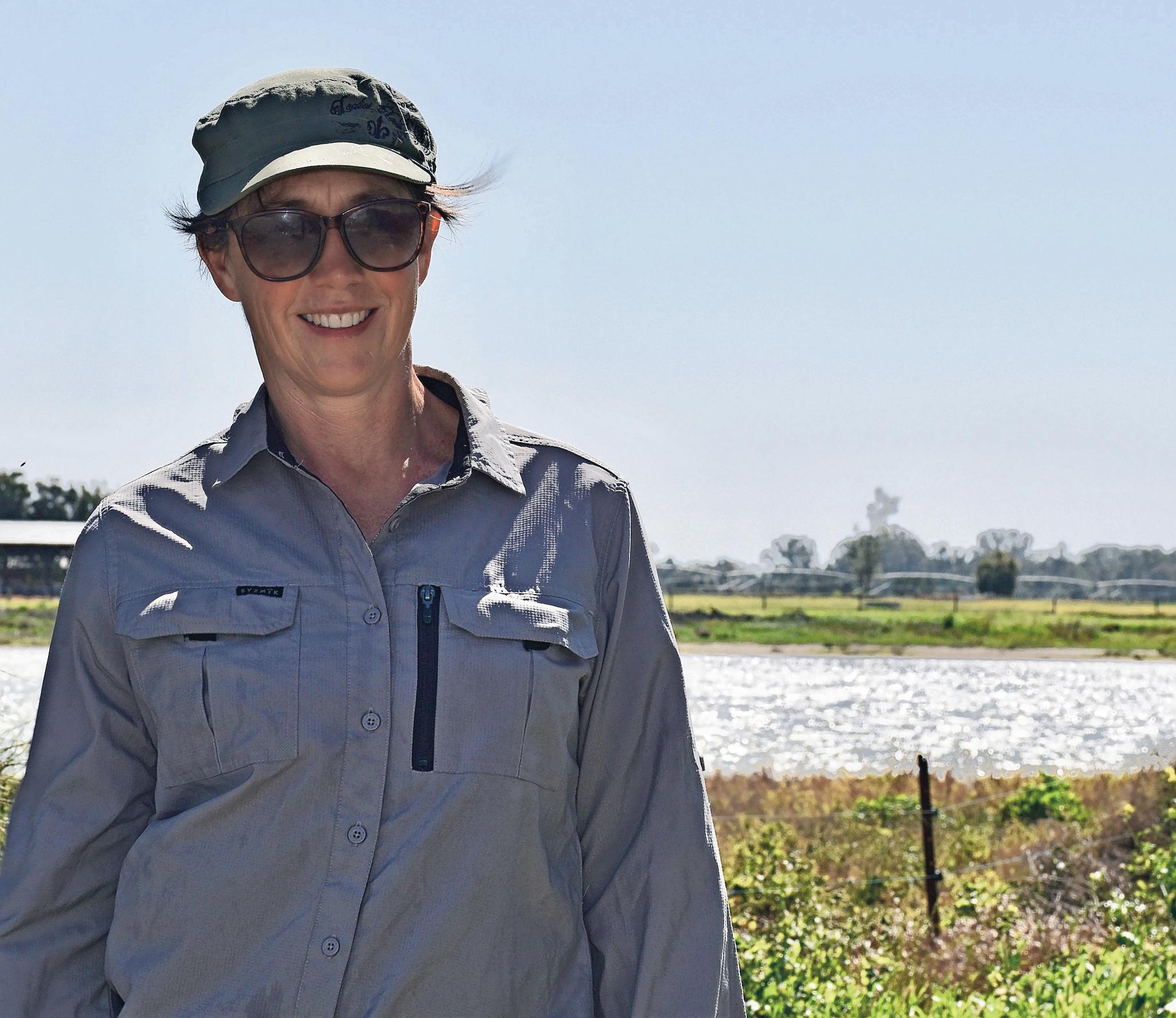
















Cohuna dairy farmer Jodie Hay has set aside space on her farm and is in the process of establishing not one but two wetlands. Page 7.



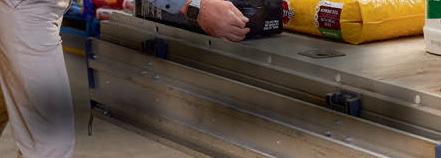





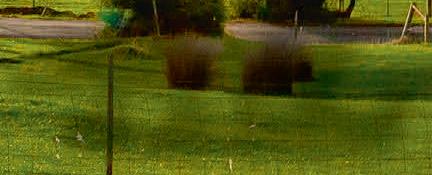







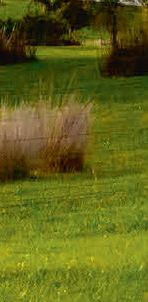



BY RACHAEL NAPIER
SILAGE SEASON, followed by hay!
It was our job as kids to run the thermos and cakes and food down the paddock to keep Dad and the other farmer neighbours who had been going for days replenished.
Nowadays of course, it’s all over in a day or few. The marvels of modern machinery.
I recall all our neighbours owned a select piece of machinery each, so when combined at silage time, we all banded together to get everyone’s done.


Contractors weren’t a big thing yet, but thank God that changed!
It’s still a time of stress and anxiety, watching clouds, trying to plan getting silage off to prepare the next crop bed in time — these days it’s usually maize.
In the meantime, Dad would forget about checking the dry cows and heifers, which usually


cost us a cow.
Water efficiency and crop selection has become a much bigger piece of the farming puzzle than what it was back then.
The Murray Dairy Board will hold its next meeting at Kerang, in order to visit the Kerang C4Milk trial site.
This trial site has started on some old irrigation ground, which I’m really looking forward
to looking at, as hybrid croppers, weed control is something of a challenge for us. (See the story on page 8.)
Dairy Australia and our region, Murray Dairy, have invested a lot of levy funds into this research. Also, many tools to help us with the bucket science.
Last year we had a contractor spread our effluent on our maize ground prior to sowing. The Dairy
Australia Effluent Calculator (you can Google that) was a big help in working out how much nitrogen we had shifted, and what the deficit for the maize needs was before investing in fertiliser.
Early September saw a little temperature spike and some unholy winds.
The temperature spike prompted us to run the fans and sprinklers in the dairy prior to summer. It’s one of those maintenance jobs we usually forget about at the end of summer until it comes round again.
Last year the sprinkler pump had seized, which wasn’t that helpful come the first hot day! Our dairy yard is covered and has fans and sprinklers on timers. This is a large piece of our ‘managing heat stress’ puzzle. Check your heat strategy out this week, before you need it.
Happy farming!
– Rachael Napier is the Murray Dairy Chair.
A culturally diverse workforce delivers many benefits for dairy farming. We’re looking for farmers that want to improve how they lead and develop a diverse team.

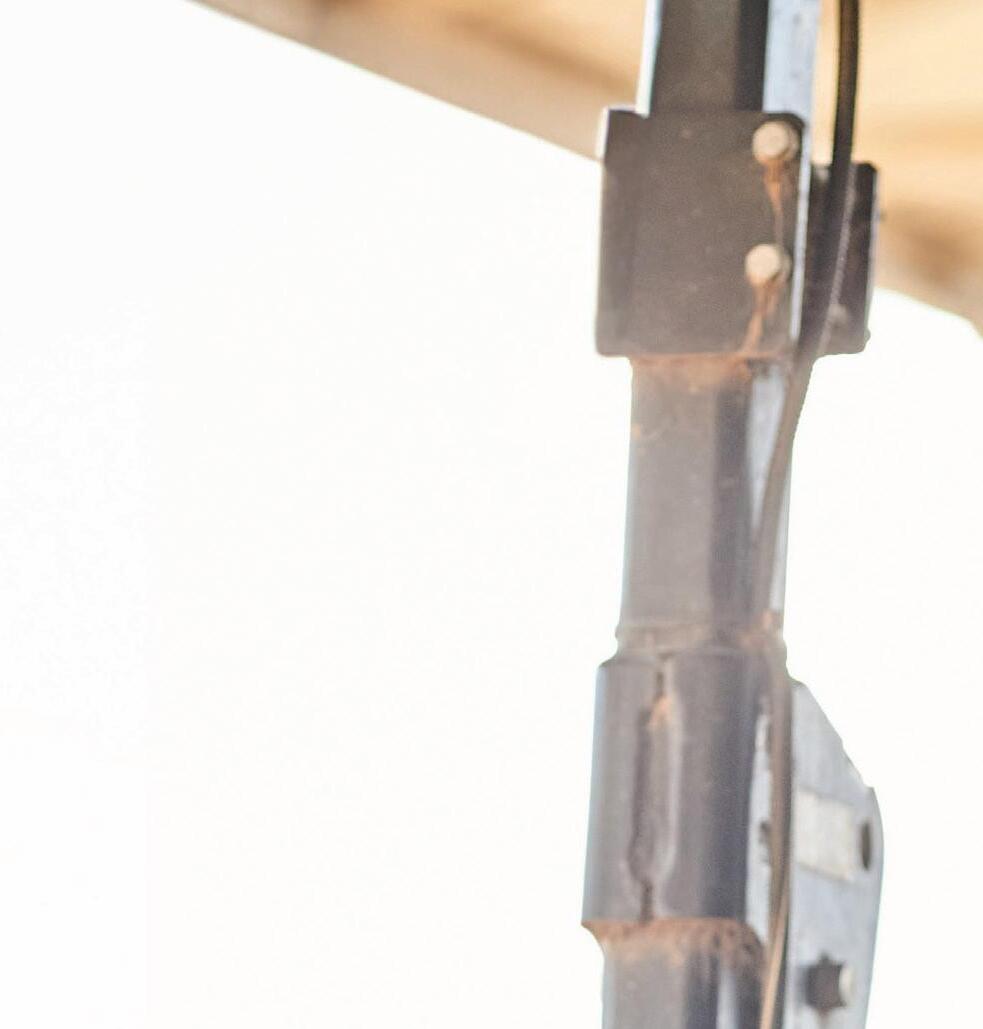
Dairy Australia together with Gardiner Foundation are developing a personalised one-on-one service to support dairy farmers with being the best possible employer.
For more information contact shane.byrne@murraydairy.com.au or register via the QR code.


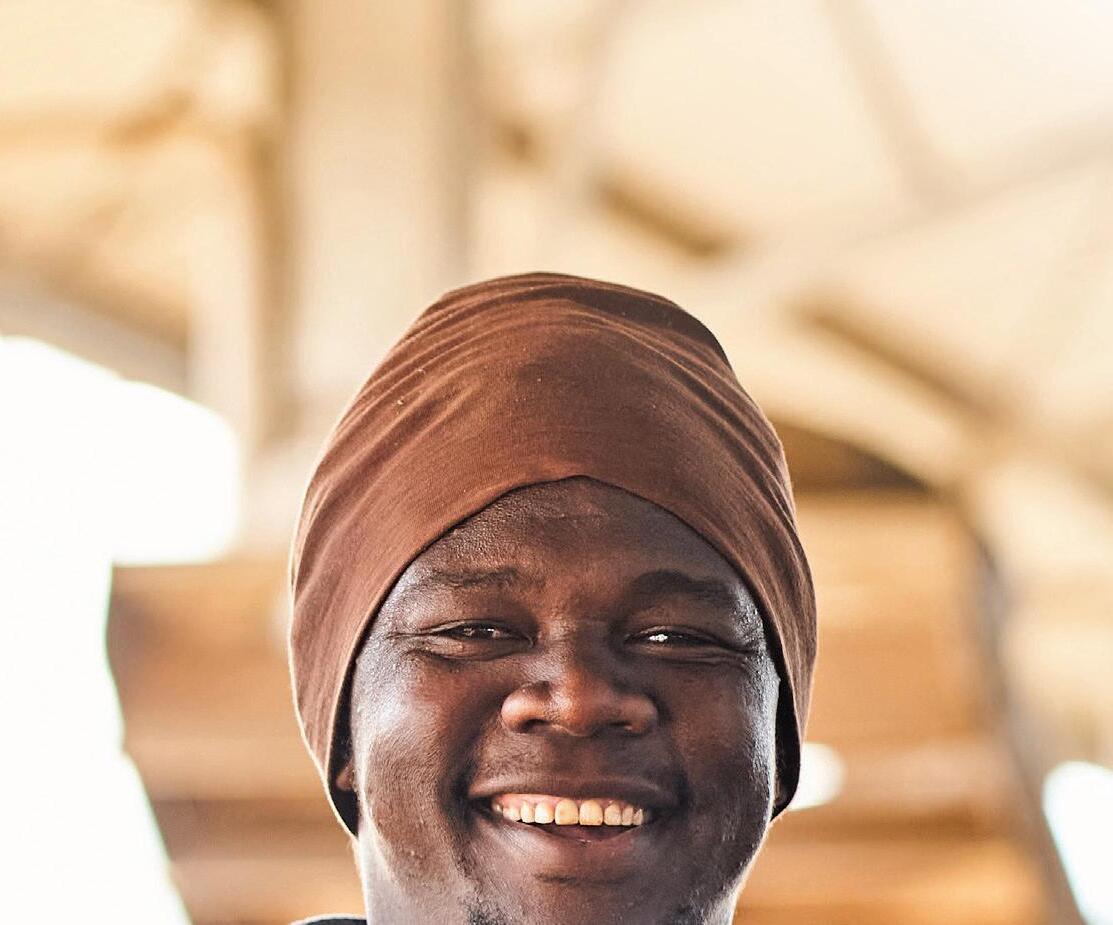
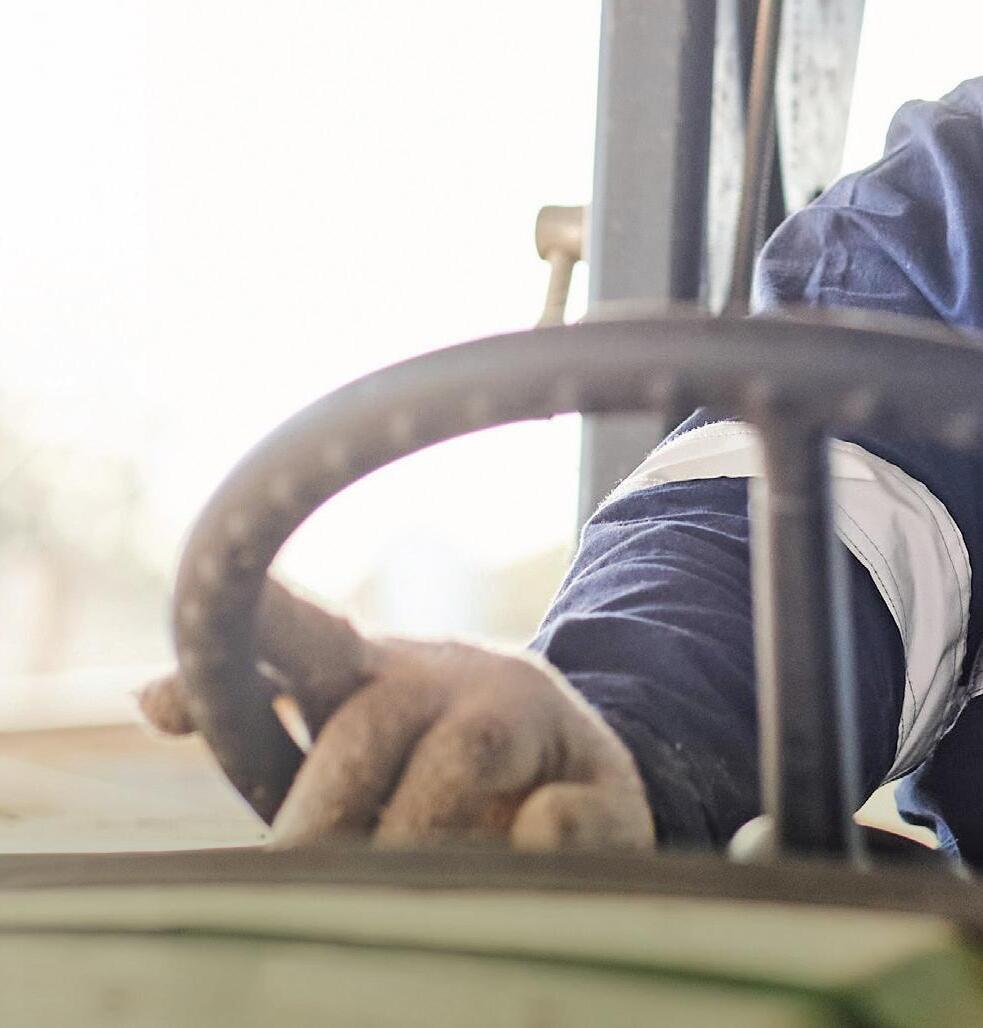




















BY SOPHIE BALDWIN
A MILK processor CEO has voiced his fears for the dairy industry’s future in the face of fresh water buybacks in northern Victoria.
Australian Consolidated Milk chief executive officer Jason Limbrick spoke about the potential impacts on the industry from a processing point of view at a Victorian water summit in late August.
The summit was organised by the Goulburn Murray Irrigation District Water Leadership Group and was attended by farmers, food processors, community leaders, local government leaders and MPs — including Victorian Premier Jacinta Allan and Water Minister Harriet Shing.
ACM manages 400 million litres of milk to producing conventional, organic and A2 dairy ingredients and foods.
Milk is collected from about 300 dairy farmers, creating 110 direct jobs.
Mr Limbrick said ACM was just one part of the wider dairying story in northern Victoria.
“The dairy industry underpins food security and is the backbone and lifeblood of so many rural communities, producing around 20 per cent of Australia’s milk production or more than 1.4 billion litres,” he said.
“Northern Victoria makes up more than 85 per cent of milk produced in the basin and our region plays a critical role in supplementing northern states with fresh milk — around 250 to 300 million litres are trucked north.”
Across northern Victoria, dairy farmers employ close to 3000 people on-farm and 3500 in dairy processing across 11 factories, plus a further 6200 people work in related
dairy industry activities.
“That’s almost 13,000 jobs our industry creates in northern Victoria alone,” Mr Limbrick said.
He said since the introduction of the Murray-Darling Basin Plan in 2012, dairy farm numbers across the basin had fallen by 47 per cent and raw milk production had dropped 35 per cent.
“Australian dairy processors are a critical part of the dairy supply chain.
“Our viability and sustainability are essential to securing a strong, vibrant dairy industry that can keep dairy manufacturing local.”
ACM products, like all Australian dairy products, are exposed to global demand and supply fundamentals and pricing, so competing on both scale, product mix and value into the future is essential.
Twenty years ago, northern Victoria produced around 2.7 billion litres of raw milk, now it is down to about 1.4 billion.
“Reductions in water availability and a tightening of water price caused by the basin plan has contributed to this decline,” Mr Limbrick said.
“While we are currently seeing marginal increases in raw milk production volumes, processors must be confident this will continue before further developing their asset bases to support domestic and export markets.
“This confidence is even harder to achieve when we know one of Australia’s largest producing dairy areas — the Goulburn Murray Irrigation District — is facing an uncertain future with less water.
“And less water means less milk production, which means less processing and less jobs.”
Mr Limbrick said dairying was special when it came to job creation.
Australian dairy processors create more than 70,000 jobs, with about 20,000 of these a result of direct employment — of these, almost 60 per cent are in regional Australia and a quarter of these are in the highest job skill categories.
“Australian dairy processors provide lifelong, valuable careers and play a significant role in the vibrancy of regional and rural communities including the local footy team, the local primary school, and everything else in between,” Mr Limbrick said.
“The contribution dairy processors make cannot be underestimated.”
He said it was extremely disappointing to see the omission of the dairy industry when DCCEEW commissioned an ABARES report to examine the impact of water buybacks on irrigated agriculture.
“Omitting the processing industry, means the report is a long way from the full picture of how buybacks will impact our industry and communities in the GMID.
“The dairy industry is now being forced to commission its own research to understand the impact to our industry as a whole.”
Mr Limbrick said the announcement of a $300 million compensation package, of which Victoria might get $100 million, was seriously insufficient — especially when there were significant gaps in the ABARES report.
“Over the past 18 months, 11 processors have announced a closure due to various reasons and we cannot have further reductions in assets in the GMID footprint.”
He said government and the dairy industry working together to secure a viable and
The Victorian Government has formed a committee spanning a range of government departments to pursue water policies and contest the Federal Government’s grab for water through buybacks.
The government has set up an inter-departmental committee comprising representatives from agriculture, local government, environment, regional development and industry.
The group is being driven by Victorian Water Minister Harriet Shing, Victorian Premier Jacinta Allan said at a Rural Press

Club lunch In Bendigo last month.
“We don’t support the buybacks that are being proposed by the Commonwealth ...” Ms Allan said.
“In prosecuting the case to the Commonwealth Government we are taking a whole-of-government approach, and the water minister, Harriet Shing, is taking the lead.“
Ms Allan attended a water summit hosted by the Goulburn Murray Irrigation District water leadership group earlier in the morning, attended by food processors,
farmers, community leaders, members of parliament and local government leaders.
Speaking after the meeting, Ms Shing said the water issue covered a whole-of-Victoria matter, that water policy touched multiple portfolios and that it was being established to inform the development of water policy relating to the Murray-Darling Basin.
“We know that water policy isn’t something that fits exclusively within the water portfolio.

sustainable industry and community was essential.
“My fear is unsound water reform will destabilise the industry at a time when supply chain efficiency, value creation and collaboration are required.”
“Water is an enabler of so many different things, that’s why a whole-of-Victoria government approach is so important.”
“Victoria is united in the position we are taking to the Commonwealth.”
The state is pressing ahead with its “prospectus” designed to offer an alternative to the Federal Government’s buyback campaign.
Ms Shing said it was not too late to pursue alternatives, despite the Federal Government having started water purchases.









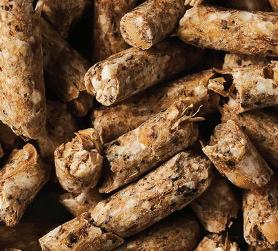
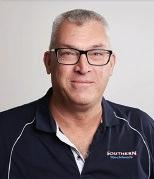
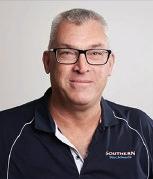






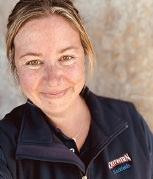



IN THE dairy industry, cow fertility plays a critical role beyond basic herd management.
Murray Dairy’s extension coordinator Ross Read says there are significant hidden costs of poor cow fertility.
Many farmers focus on feed quality, herd health, and operational aspects, but poor cow fertility can quietly chip away at profitability and productivity.
According to Ross, understanding the financial impact of fertility issues is essential for farmers to make informed decisions and take corrective measures to protect their business.
Ross said poor fertility can manifest through longer calving intervals, higher rates
of non-pregnancy, and increased instances of repeat breeding. Factors such as nutritional imbalances, environmental stress, reproductive diseases, and inadequate herd management practices can all contribute to poor reproduction.
He highlights several direct costs that arise from poor fertility, including:
Extended calving intervals: Cows take longer to return to the milking herd, with each additional day a cow remains open representing a missed opportunity for milk production, ultimately lowering herd efficiency.
Breeding costs: Veterinary fees for treating reproductive disorders, synchronisation
programs, and repeated inseminations are all expenses that burden the business.
To reduce these costs, Ross suggests key strategies that farm businesses can adopt, such as regular reproductive health monitoring and diagnostics to identify and address fertility issues early.
Whether through advanced technology or veterinary intervention, early detection is crucial.
He also stresses the importance of accurate data.
“Good data gives farmers insight into factors like age, days open to first service, submission rates, conception rates, and six-week in-calf rates.”

BY ANDY WILSON
WHEN NATHAN Shannon returned to the family dairy farm at Katunga after a successful career with Agriculture Victoria in Wodonga, his mission was to find somewhere else outside the Goulburn Valley to build on his family’s legacy.
Mr Shannon spoke at the ‘Future for our food and grocery industry’ forum in Shepparton on Tuesday, September 3.
He said his role at AgVic was to connect dryland dairy farmers with research and development, but he returned to help his parents with milking 500 dairy cows and start to shape the farm’s future.
“After probably eight years over there, I decided to come home and go farming,” Mr Shannon said.
“The big question — I probably had to make this decision — was do we want to stay here or move?
“Dad’s very keen on buying land and developing it but I’m keener on the cows and always have been.
“So I wanted to provide a sort of better life for the cows I suppose.”
Mr Shannon said he looked at other options in Tasmania, south-west Victoria and Gippsland and chose the state’s north-east.
“I wanted a mix of flats and a mix of highlands, it was very close to town and the ski fields.
“But it was overpriced and to get a large enough area that I wanted wasn't going to happen.”
Shannon Pastoral decided to stay in the Goulburn Valley and remould itself.

“A bit of the challenge was probably eight or nine years ago, when the policy around water was definitely changing — there was going
to be less of it — we needed to get more efficient,” Mr Shannon said.
“We want to do the best we can with it, and I found irrigated grazing wasn't going to get me there.
“One tonne (of product) per megalitre wasn't going to cut it; I wanted to push closer to four, and there's been a significant capital commitment, I suppose, to get there.”
Mr Shannon’s expertise is in the welfare of cattle, and he and his father successfully transitioned the farm to directly process the cattle feed, before a study trip to the United States saw them design and build suitable shelters, which has resulted in healthier cows and better milk.
Mr Shannon said he was reminded of the measure of his cows’ welfare whenever a gate was left open accidentally.
“Yes, cows have escaped and they run around and they do their thing for probably 10 or 15 minutes and then they want to come straight back in,” he said.
“So that's the sign to me that they would rather be inside in fresh sand beds, all the food there they want, fans to keep them cool and misters that are climate controlled.
“If I was a cow, I would like to come back — that's the ultimate test for them, I suppose.”
In terms of future sustainability plans, Mr Shannon said he had no intention of ‘solar-ing up’, choosing instead to investigate options with using a manure digester for energy needs.
“A lot of our work is done in the dark, so solar's not going to help us,” he said.
“We're creating a lot of manure or potential ingredients that go into a digester, but the next question is: how much capital do you throw in it?”
The Australian Food and Grocery Council has set out clear challenges to the Goulburn Valley’s food and grocery industry, and has called on governments to ease restrictions on infrastructure investment.
About 135 delegates at a Shepparton forum on Tuesday, September 3, heard from Australian Food and Grocery Council chief executive officer Tanya Barden who said generational change was resulting in increased demand for sustainability and more transparency of information.
“You’ve got more Millennials and Gen-Z that are more likely to be vegan and they’re more concerned about climate change,” Ms Barden said.
“(This) means an increased demand for more sustainable products.
“Consumers are wanting cleaner labels with simple ingredients; they want to know more about where their products come from, how it’s sourced, whether it’s ethical, whether it’s sustainable and whether they’re healthy.”
Ms Barden also cautioned that recent industry growth figures were offset by smaller business margins, initiated by supply chain disruptions during the COVID-19 pandemic.
“In food, beverage and grocery manufacturing in the 22-23 (financial) year, turnover increased by 11 per cent, and you think on that headline, that's great it's an industry in growth,” she said.
“But the reality is that industry profits fell by seven per cent in that same year.”
Ms Barden said both consumers and
manufacturers were “feeling the pinch”, which was affecting profit margins.
She also highlighted the large amount of investment into capital equipment needed with such things as new packaging to meet consumer sustainability demands, and called on governments to adopt policies that support that investment.
“Particularly using the tax system to drive accelerated depreciation to expedite these investments which are really crucial to the future of food and groceries in this country.
“So as an industry I guess to sum up: we have enormous opportunity but the reality is, beyond that strength there is fragility.”
The ‘Future for our food and grocery industry’ forum and dinner was hosted by the Committee for Greater Shepparton.

A
TRIP to the United States showed one northern Victorian dairy farmer how quickly the genetic merit of a herd can improve.
Back home at Rochester, tools such as genomic testing, sexed semen and DataGene’s Balanced Performance Index (BPI) are making it a reality in his family’s 280-head Jersey herd.
Andrew Rushton, wife Jess, children Brodie, 4, and Grace, 2, own and operate Benlock Jerseys with his parents, Bryan and Lee.
DataGene’s review of herd performance in March showed Benlock had increased its herd average BPI by 310 per cent to 172 BPI, since 2020.
The BPI accounts for the traits that affect a cow’s lifetime contribution to the farm business: production, health/fertility, longevity, workability, feed efficiency and type.
“It’s good to see what we are doing is working,” Andrew said.
“These types of advancements — genomics and sexed semen — we have to take hold of and use the data the best we can so we can reap the rewards in the future.”
The Rushtons genomic-test their heifer calves, at seven to10 days old, to identify the genetic potential of each female as early as possible.
“I look at that data 12 months in, before they are joined, to see where the top half are according to BPI,” Andrew said.
“We won’t necessarily cull on data, but we breed the top portion to sexed semen and use conventional semen on the rest.
“It’s one of the ways we ensure we are rearing
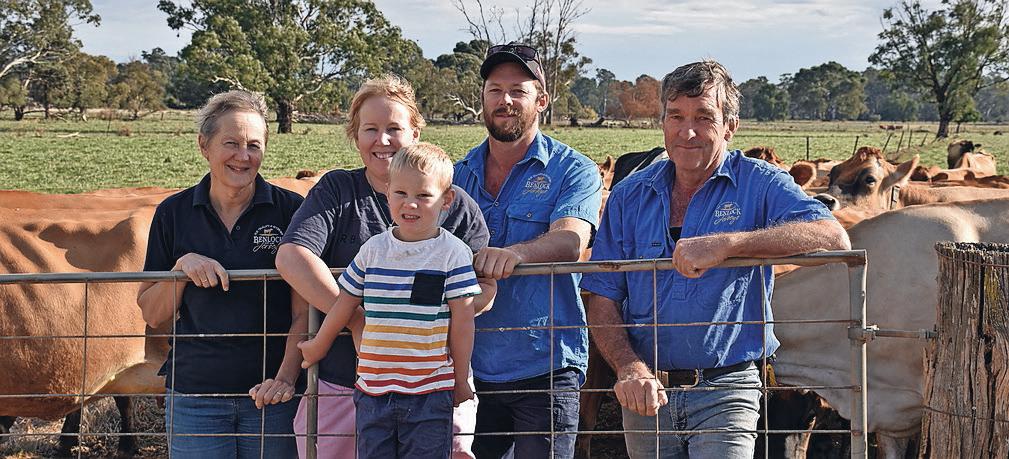
the best heifer calves. It also saves us money on sexed semen because we aren’t blanket-joining the whole group.
“Our best genetic gain is out of those top heifers and the quicker we can get a calf out of that heifer, the bigger our genetic jump.”
Retaining heifer calves from Benlock’s best young females represents a significant practice change for the farm business.
Previously, the Rushtons would run their own herd bull with their heifers and sell all the resulting calves. The heifers — for replacements — would be retained from the offspring of the milking herd.
This isn’t the only change behind the improvement in the Rushtons’ herd average BPI.
The family has been using a team of five bulls, selected with the assistance of a breeding consultant, to improve specific traits.
“We work closely with Ben Pedretti. He scores the heifers and picks out three traits that we want to improve and from there we work together to select the bulls,” Andrew said.
“We pick a bull team of five, we don’t use too many because it gets confusing, and between Ben, myself and Dad we go through and pick.
“We are always looking at teat placement and type, more recently daughter fertility and always on the Australian system — the BPI.
“The BPI takes into account so many other things that aren’t visual, such as survival, daughter fertility and all the things you can’t see.”
Andrew uses DataGene’s Good Bulls app as a quick and easy way to check the pedigree of an unknown bull.
He said the app was a better option than looking through “hundreds of catalogues” that clutter the office.
Bulls that carry the DataGene’s Good Bulls logo meet the minimum criteria for BPI and reliability and are available for purchase.
Last year, Andrew and Jess and their children moved out to the family farm to officially take over the management from his parents Bryan and Lee.
Tongue-in-cheek, Andrew said the improvement in Benlock’s herd average BPI was proof that he hadn’t “totally stuffed the job” after taking over the breeding side of the operation from his parents.
More seriously though, he said the BPI improvement came from a “good base” of Jersey cows and a focus on continual improvement.
Last year, Andrew travelled to the US with regional development organisation Murray Dairy as part of a study tour.
He visited the ST Genetics bull facility in Wisconsin, where he confirmed his practice of focusing on young stock was the best way to lift genetic gain.
“One thing they did there to progress quickly, they were using eggs from calves and semen from calves to get genetic gain,” he said.
“It was quicker than waiting for the heifer to grow out and really opened my eyes to how quickly a herd can improve.”




BY SOPHIE BALDWIN
MORE THAN 110 Alpine Valley dairy farmers were recently treated to a night of fun and networking at the Dare to Dairy Dinner and presentation of the Udderly Grateful award — recognition of a tireless dairy advocate and supporter.
Running with the theme “positively dairy”, the focus of the dinner was to highlight the excellence within the region and encourage a continued focus on the positive aspects of dairying.
Attendees also had the opportunity to hear from esteemed keynote speaker Esther Price, an agriculturalist, adventurer, plane crash survivor and past executive officer of Western Dairy.
Esther spoke about her own experiences and the importance of a positive mindset, fitness and sleep.
Chair Ebony Mull said the event was a huge success.
“Everyone seemed happy and the feedback we received was really positive. It was a great atmosphere and we had some really good vibes on the night,” Ebony said.
She said this was the third running of the event, which initially came about after the Murray Goulburn milk price crash.
“Farmers were pretty disgruntled at the time after the clawback and the original idea of the night was to get our farmers in the same room just to have a conversation because things were so tough,” Ebony said.
The event was meant to be bi-annual, but the COVID-19 pandemic derailed that and it has been three years since the last one.
“The dinner was a great networking night and with the tough season behind us now, our spring is going really well,” Ebony said.
“Our farmers now want it to become
an annual event, a bit like the old Murray Goulburn Christmas party, as a chance to get together and talk about the industry and celebrate our achievements.”
She said a highlight of the night was watching industry stalwart Pat Glass receive the Udderly Grateful award, a celebration of the many hours and hard work he has put into the industry over the years.
“Pat has always seen the benefit in raising awareness about the positives in the dairy industry, finding solutions for issues needing attention and rolling up his sleeves and chipping in when times are tough,” Ebony said.
Pat received the award from respected industry professionals and drawcard speakers John Mulvany and Ian Gibb, who also gave insights about their time in the industry.
Ebony a vet, returned to the family farm during the pandemic.
Her family milks 220 cows at Gundowring.
“I like to go to events and get out and about to see and learn as much as I can,” Ebony said.
Hence her involvement in Alpine Valley Inc.
“The group was looking for a change in direction, so I jumped on board because no-one else would put their hand up,” she said.
Ebony has also been involved with Dairy Australia Ambassador Program and the Young Dairy Network.
“We had 50 people come to our YDN mastitis night as there has been quite a few young people come back to the region to take up share farming/working opportunities,” she said.
She said it was important to hold relevant events to keep people connected and interested, especially in a tough year like this one with a downturn in milk price.
“We have so many great older farmers and they have a role to mentor us and pass on their industry knowledge and wisdom for both the good and bad times and we need to keep that connection,” she said.
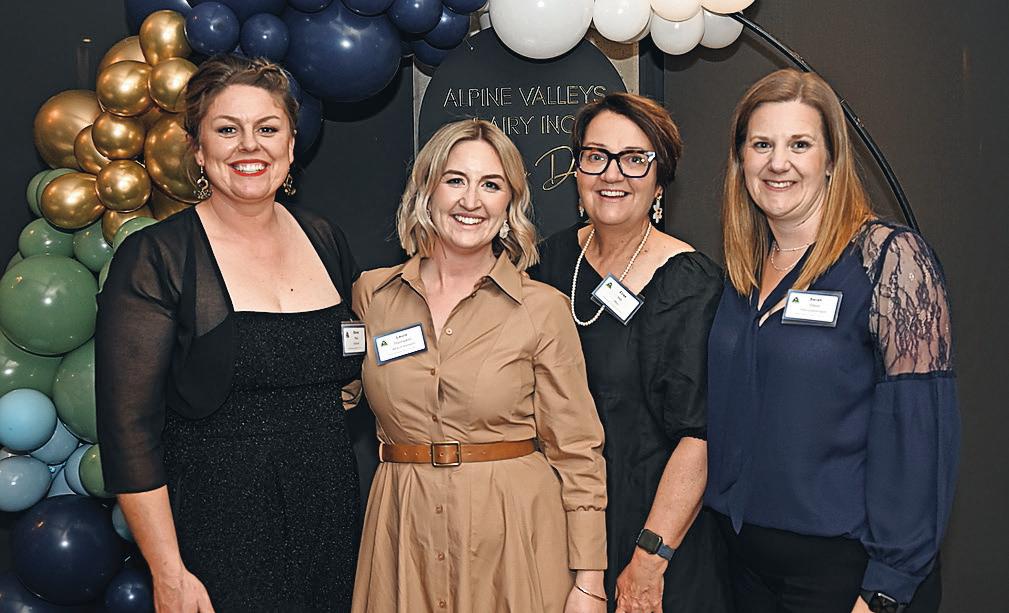
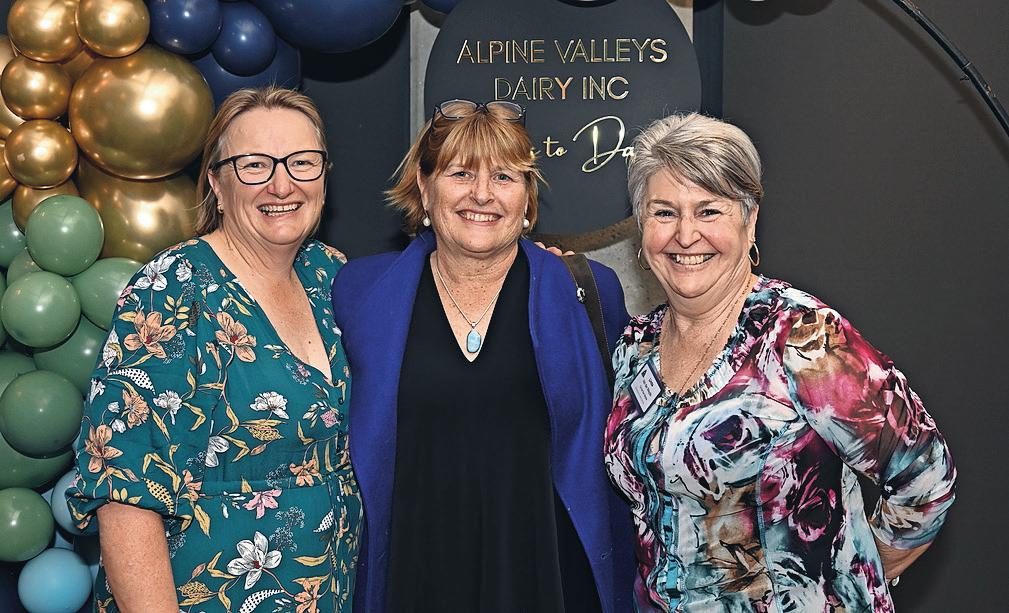
Retired dairy farmer Pat Glass was very humbled to receive Alpine Valley Dairy’s Udderly Grateful award at its recent Dare to Dairy Dinner.
Pat and his wife Kerrie are well known in dairy circles for their contribution to the industry over many years, with Pat holding many roles including a stint as chair of Holstein Australia.
Pat said his involvement in the dairy industry had been rewarding, not just from a financial perspective but also from a personal perspective, allowing him to forge many great relationships over the decades.
Pat and Kerrie’s dairying journey together began in 1983 when they were working for wages on a dairy farm at Tatura. They then moved in to sharefarming at Timmering for seven years, before leasing a farm at Rochester.
Three years later they bought that farm. Unfortunately, that was just before the millennium drought, which resulted in a pretty tough period.
“We bought a run-off block in 2002 and it was 15 months before we even saw a blade of grass grow on it,” Pat said.
Both Pat and Kerrie came from farming families in the north-east. While they found it hard enough to have to pay for irrigation water, when they didn’t receive any allocation at all due to the tough drought, they thought they might as well go back to what they knew — dryland faming in the north-east.
“In 2005 we bought 350 acres (142

hectares) in the Kiewa Valley and we were milking about 240 cows at that time,” Pat said.
“Over the years we slowly expanded and milked 550 cows in our peak.”
Today, their son Brendon and his wife Sarah have bought the farm and now run the business. Pat and Kerrie spend their ‘retired days’ chasing a few beefies (600 head) around.
Succession planning was always important to Pat and Kerrie and rather than retire with millions in the bank, they were always about setting up the next generation of their family.
“We used our own wealth building the dairy farm to set up our kids and that has been so rewarding because they haven’t
had to work as hard as we did to get started,” Pat said.
“Even though we went through many tough years, we always had a cash flow and with financial guidance from Ian Gibb we were able to set up a super fund and officially retire at 63.”
He said dairy farming was a tough gig, particularly the mental strain of continual decision-making.
“Before you get out the door in the morning you have probably made five decisions and then when you get the cows up probably another five more because the weather was wet and you have to change the paddock and it just goes on and on,” he said.
“The energy and time spent making
decisions can wear you down and you need to be prepared for that.”
He said the Dare to Dairy dinner was a great night out and he was honoured to receive the award from Ian Gibb and John Mulvaney, two men who helped him enormously in his own personal dairy journey.
“Ian and John really helped guide our wealth creation over the years and to have them present this award was really humbling and made it even more special,” he said.
Alpine Valley Dairy Inc has a long history of supporting the region’s farmers for the betterment of the industry and Pat was involved from the early days.
“We put a lot of work into getting agriculture into the local secondary school and we led the way in a climate adaptation program which was picked up by Dairy Australia at the time,” Pat said.
He said the dinner was another great initiative.
“The original purpose was to get people off the farm and talking to each other and the dinner did that so well, people were still talking two hours after it finished,” he said.
Pat said while he had stepped away from a lot of industry roles, including attending discussion groups, he realised he still had a small role to play as a mentor.
“Young farmers can certainly do with some help, especially when it comes to tough seasons to challenge their thinking and talk about business decisions,” he said.

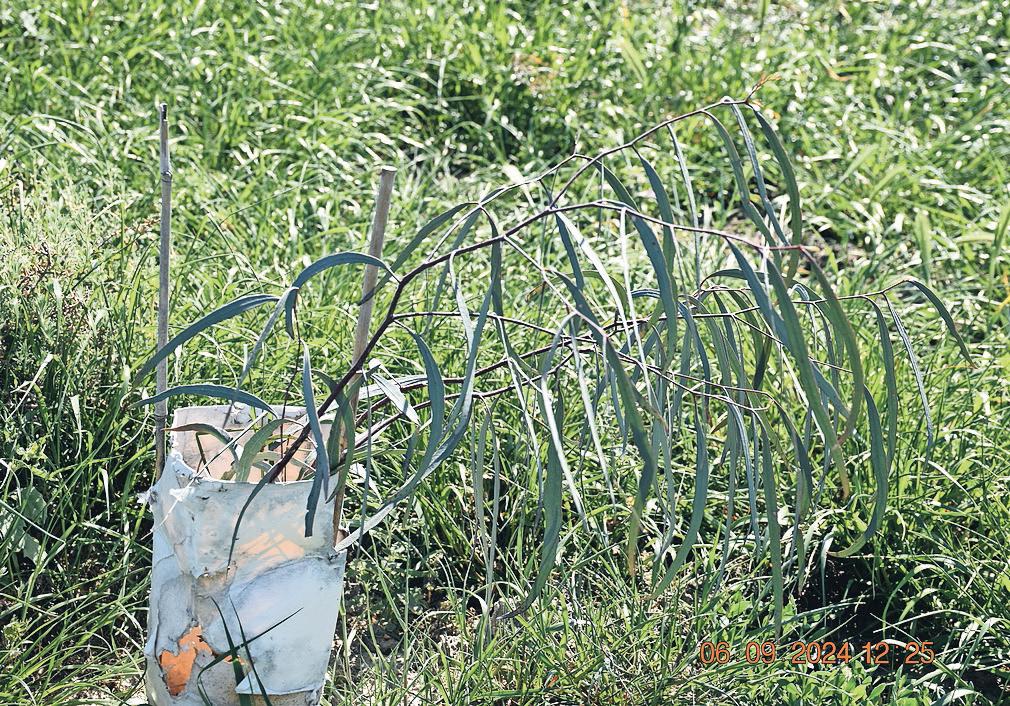
BY SOPHIE BALDWIN
JODIE HAY is a firm believer irrigation is dual-purpose water and can support agriculture and biodiversity on farm.
She is currently in the process of establishing two wetlands on her dairy farm on the outskirts of Cohuna, an opportunity she says is only possible with a regulated and viable irrigation system.
“Irrigation is now a relatively small user of the total volume of water available in the Murray-Darling Basin and yet our potential to support on-farm environmental outcomes is huge, considering over 93 per cent of wetlands in the basin exist on privately-owned land,” she said.
In 2021, Jodie and her husband Col purchased a 539ha (1332-acre) property adjacent to their operation when their son Tom returned home to the family farm. It was a former corporate dairy farm and had been partially disconnected from the irrigation system.
In 2022 it flooded, which gave them the opportunity to get a really good look at how water actually flowed across it.
“There was a natural depression which filled and after observing the birdlife and vegetation that occurred during and after the flood, I thought it would be a perfect spot to turn into a wetland,” Jodie said.
“I invited the Murray Darling Working Wetlands Group out to have a look around and we ended up with two sites.”
She said the group was very excited about the potential of re-establishing the wetlands, particularly wetland two.
“That depression was empty at the time but they were very taken by the site because it was a remnant wetland that hadn’t been modified apart from drainage, and was still in its natural state — something that is unusual for our area,” Jodie said.
“It doesn’t look much now but we will fence it off, put some water in and manage it as a treeless wetland. The working group think it will be a perfect place to attract brolgas who have been sighted on neighbouring properties.”
Wetland one is about 2ha in size and wetland two is about 4ha.
“We fenced off wetland one in 2023 and planted 300 trees, the majority of which have taken off,” Jodie said.
“It has been really good to see the progress of the wetland as it slowly comes back to life. We now have some aquatic plants and sedges growing around the edges and you can see the natural grasses starting to revegetate.

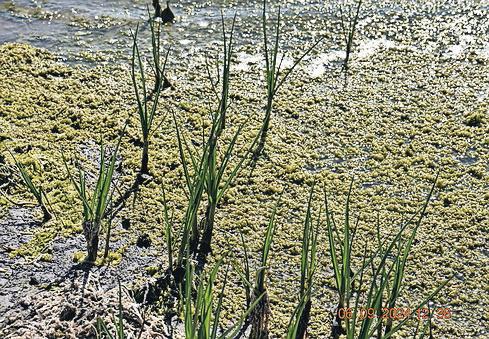
“The birds love it and we have seen pelicans, swans, ducks, white-faced egrets, grebes, spoonbills, chats, swallows, dotterels and stilts on the wetland at different times of the year.
“Field and game came out and installed some hen houses on the wetland and some parrot nesting boxes in the neighbouring trees and they are going to monitor them, although the swallows have already moved in.”
Reconnecting the farm to the irrigation system enabled an environmental flow to be delivered to wetland one in autumn this year.
Wetland two can receive water now too.
They will let the water level in wetland one draw down naturally over time. Wetland two will receive water under the guidance of the group.
“It will ebb and flow with the seasons but we are expecting it to provide an excellent refuge in drought years because it can hold water for a long time,” Jodie said.

Controlling vermin and feral animals is also a priority.
“We regularly let people in for vermin control. It is part of the management story and complements what we are doing with the wetland,” Jodie said.
She said working alongside the Murray Darling Wetland Working Group, which offers knowledgeable commonsense water management, had been a pleasure.
“I love that they understand the importance of landowners in environmental recovery,” she said.
“An irrigated grazing dairy enterprise has scope to exist alongside environmental opportunity — biodiversity and primary production can co-exist, in fact it is essential it does because we have the ability to feed the world and I won’t be shamed by that,” Jodie said.
The wetland will be supported by existing and additional tree plantations and Jodie said
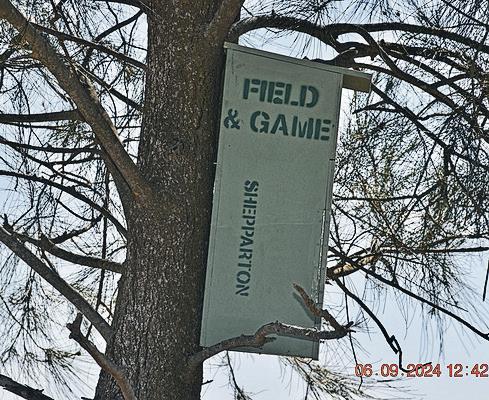
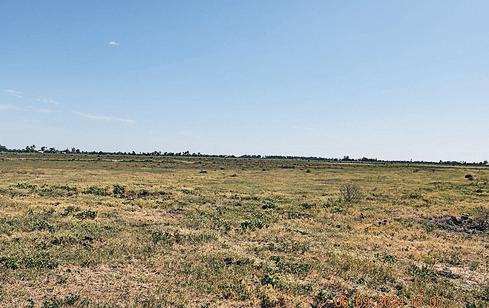
it was amazing to see the regrowth that had occurred in the disconnected irrigation channels surrounding the property.
“I have always loved the bush and planting trees and to see this type of regeneration on our own farm is so rewarding,” she said.
The Hay family milks 430 split calving cows across 1092ha (2700 acres), either owned or leased.
“The original purpose of purchasing the 1332 acres was to increase our home-grown capacity and build up a feed bank to navigate an uncertain water market and any dry seasons,” Jodie said.
After buying the property it was flooded in 2022, a freak tornado took out their wheat, oat and maize crop in 2023 and, despite a summer flood in the same year, they finally got a harvest in 2023.
“We have been able to sell some excess fodder to surrounding farmers over the past couple of months,” Jodie said.
“That’s the beauty of irrigation, it offers security and enables us to produce fodder and staple foods to feed the
also providing habitat for
YVETTE WILLIAMS has always been driven by a deep curiosity about the intricate details of dairy farming, a fascination that began during her early research days and now fuels her work as the research and innovation co-ordinator for the C4Milk Project.
C4Milk, a three-year partnership involving Murray Dairy, Dairy Australia, Gardiner Foundation and the Queensland Department of Agriculture and Fisheries, aims to delve into the effects of crop-on-crop rotations in intensive fodder systems, a topic of significant importance to the dairy industry.
“My role is to co-ordinate the research in the Murray Dairy region. I’m part liaison and driver, focused on achieving specific outcomes and answering key research questions,” Yvette said.
“With C4Milk, we’ve been fortunate to secure research sites in our region, which allows us to guide the direction of the research. We co-ordinate the sites, ensure reporting requirements are met and make sure the science is solid. We’ve designed the experiments well and they’re progressing as planned.”
Yvette’s journey to her current role is rooted in her extensive background in agricultural research.
In 2003, she earned her PhD from the University of Melbourne. Yvette’s thesis was on dairy cow nutrition in the Kyabram region.
She said it was also an opportunity to see how research had impacted on farms.
“I enjoy getting out and being involved in farmer events, especially since Murray Dairy is such a farmer-focused organisation,” she said.
“Observing how farmers react to the information, their questions and the sorts of things they are asking really helps set our direction and shape our thinking.
“It’s also fascinating to see how the information we developed 20 years ago has been adopted — or not — and to understand why.”
After finishing her doctorate, Yvette moved to Perth to work for CSIRO, where she was part of a team developing vaccines to reduce methane output and increase wool growth in sheep.
She then moved on to other roles, including managing research on a farm in New Zealand, before returning to Australia to work with Agriculture Victoria.
Yvette’s career has been marked by a deep dive into understanding the biology of cows and their digestion processes.
“I love understanding how things work, especially in biology, and identifying the issues that need improvement. I enjoy figuring out what can be done to fix them,” she said.
“My work involves writing reports, reading up on the latest research, visiting sites and constantly growing and learning.”
Although Murray Dairy doesn’t conduct research directly, Yvette plays a pivotal role in co-ordinating research activities in the region

and ensuring that the questions critical to local farmers are answered.
“We’re like a consortium. My job is to drive the outcomes we want and co-ordinate with the various research organisations to make sure the experiments are well-designed and moving forward.”
C4Milk represents a significant opportunity to address the challenges faced by farmers in northern Victoria, where the landscape of agricultural research has shifted over the years.
With the loss of major research institutions in the region, Yvette’s work involves partnering with organisations like the Birchip Cropping Group and the Irrigation Farmers Network, both of which are carrying out field experiments to test the impacts of break crop strategies on crop yield and quality in the region’s intensive fodder systems.
The project’s focus is on understanding the cumulative effects of crop rotations over
multiple years, a crucial aspect of sustainable farming that goes beyond single-year production.
“It’s a marathon, not a race,” Yvette said, emphasising the importance of long-term research in revealing the true agronomic and economic impacts of intensive cropping systems.
For Yvette, one of the most rewarding aspects of her work is the opportunity to engage with farmers directly.
As someone who has spent much of her career behind the scenes in research labs and offices, she now enjoys getting out on the farms, observing how farmers interact with the information and understanding the challenges they face.
“It’s about building relationships and learning from each other. The more we understand these complex systems, the better we can support the farmers who rely on them,” she said.
After a slow start to the season, Murray Dairy extension team lead Bec Wyper offers crucial advice for dairy farmers looking to make the most of spring pastures. With little rain and no growth, or slow start for autumn pastures then hampered by extreme cold, many farmers have been forced to feed out for longer than expected.
Spring is always crucial but in years like this it is important to get things right and not panic.
Bec stresses the importance of timing when it comes to grazing.
“Don’t graze too early,” she advises. Waiting for the third leaf stage on rye-grass can produce up to 40 per cent more feed compared to grazing at the two-leaf stage. This patience allows pastures to reach their full potential and ensures better growth throughout the season. Avoiding overgrazing is also essential. Leaving a residual of 4cm to 6cm will allow for faster and more robust regrowth, ensuring sustained feed production over time. It was hard enough to grow, so don’t go too early or too hard now.
Additionally, Bec recommends
conducting soil tests to identify any limiting factors in pasture growth. Addressing deficiencies early will help maximise spring growth and make the most of available rain.
Finally, Bec encourages farmers to grow as much feed as possible, both to conserve and replace depleted fodder reserves. However, she warns that only a true surplus should be conserved, as this ensures ongoing pasture availability and prevents overgrazing.
With these practical tips, farmers can make the most of spring and set up their feed production for the season ahead.
Yvette’s role also involves a significant amount of public relations work, ensuring that the findings from projects like C4Milk are communicated effectively to the wider community.
“People want to know what’s happening and why. Farmers in particular are eager to understand the science behind the practices they’re being encouraged to adopt,” she said.
As C4Milk progresses, Yvette remains focused on the broader implications of the research for dairy systems across the Murray region. By collaborating with experts and leveraging the latest research, she is helping to shape the future of dairy farming, ensuring that the industry remains sustainable, productive and resilient in the face of ongoing challenges.
“It’s all about staying relevant and keeping up with advances. The more we can understand and adapt, the better equipped we’ll be to support our farmers and the industry as a whole.”
